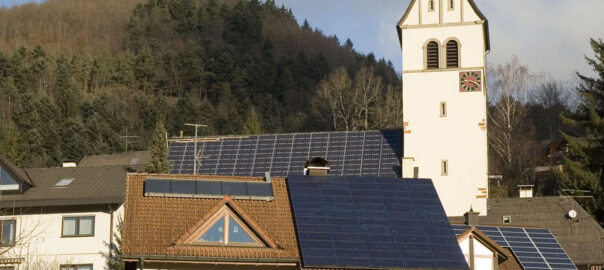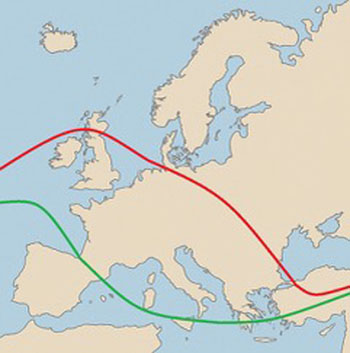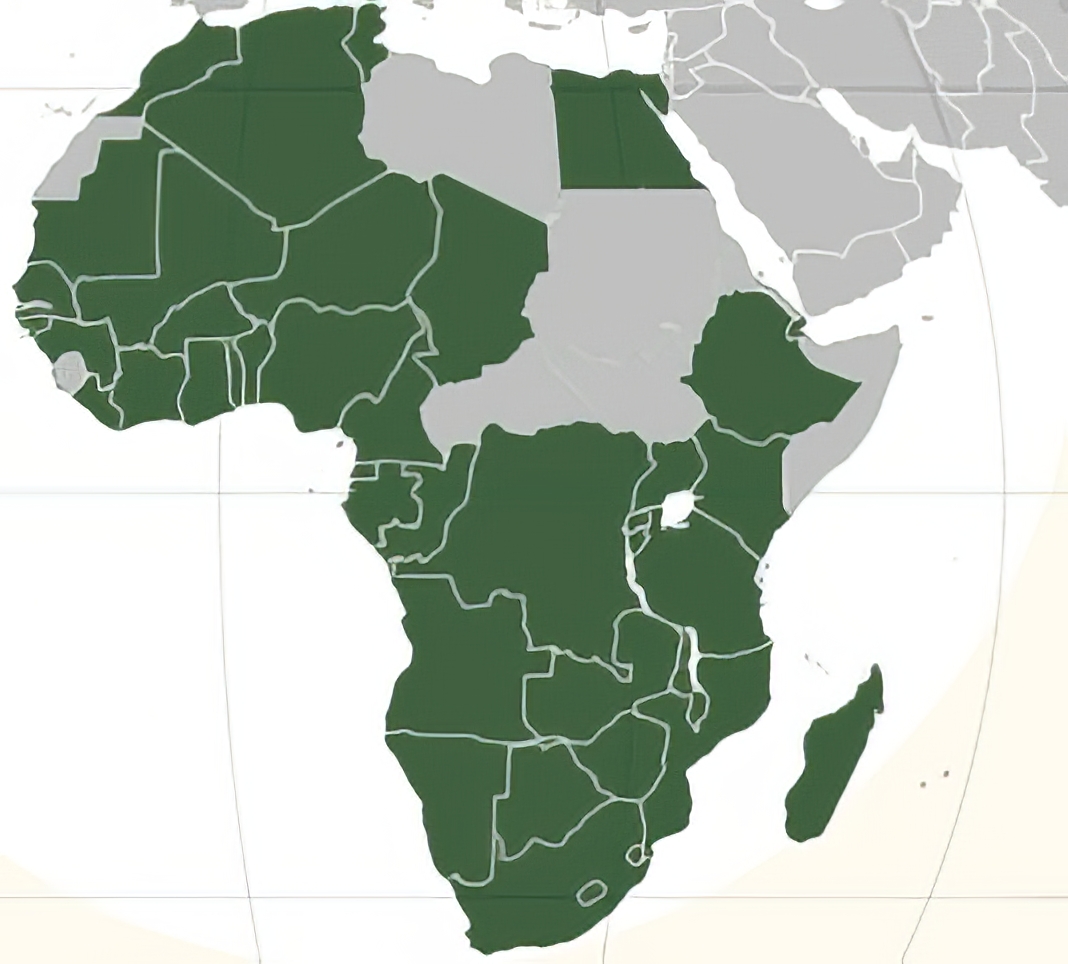
Europe’s Climate Response: The Race for a Green Future
Solar Farm in Marstall, Denmark (Wikimedia Commons)
Europe is driving the fight against climate change with bold green initiatives, from cutting emissions to boosting renewable energy. With a focus on green energy, sustainability laws, and global cooperation, how is Europe tackling the growing threats of extreme heat and climate disasters?
Fire Fight
Never before in its long history had Europe seen the combination of high temperatures and high humidity that occurred in 2003. This heatwave killed a reported 70,000 people. European governments, anticipating more such events, raced to prevent a repeat of the tragedy. They identified and monitored at-risk populations, implemented early warning systems, and restricted construction in extreme weather. They took mitigating steps such as planting more urban trees and air conditioning public buildings (unusual in Europe). So it was a shock when the heatwave of 2020 took another 60,000 lives. The heat returned very early in the spring of 2022 and yet again in 2023. Parts of Italy reached almost 49°C (nearly 120°F).
The loss of life was certainly the greatest tragedy, but not the only one. Entire villages were lost in extensive wildfires and drought, in severe storms and floods. There were major crops losses, with 2022 cereal harvests down 9% on the year before. Tourism was struck down in places where it was a mainstay of the economy. Train travel in the UK was halted because the tracks could not take the stress, buckling and warping in the extreme temperatures. Since the turn of the century, Europe has warmed twice the global average, the most of any continent. Heatwaves in Europe are now much more frequent and more intense than in any other mid-latitude region. According to European Environment Agency estimates, the economic losses from climate-related disasters in just the EU so far in this century exceed €650 billion—greater than the total annual economic output of countries such as Austria or Sweden.
Europe is especially at risk from global warming because the jet stream appears to have been diverted far to the north. Cooling winds used to disperse the summer heat rising up from the Sahara Desert, but their absence has left the Mediterranean region to sit and bake. The gathering heat can now spread to the northern countries. The continent has reached an average of 2.0°C above pre-industrial temperatures, well above the limit of 1.5°C aimed for in the Paris Agreement. Weather agencies have begun assigning numbers to the strength of heatwaves and naming them like hurricanes. But the heat is not the only climate problem.

Northern European countries like Denmark and the Netherlands are experiencing sea level rise and storm surges. Meltwater from Alpine glaciers is a critical source of fresh water for central Europe, and the glaciers are disappearing—a recent UN report warns that annual runoff from glaciated areas in the Alps could drop by nearly 45% by 2100. The intense heat in countries along the Mediterranean coast has been accompanied by wildfires of a magnitude previously unseen, with Greece experiencing a 7.5% rise in wildfires in 2024. Warmer weather in autumn has led to raging flash floods. The climate future for Europe includes more extreme floods and droughts, more frequent and intense wildfires, and even an increase in tropical diseases like malaria.
The Only Sane Response
All of this has led European countries to enact bold change. There are many reasons why leaders have the political backing for this, not the least of which is that for decades Europe has relied on expensive imported oil and gas, so alternatives are welcome. Another reason is the strong public consensus on climate science, shaped by investment in education and the fact that sustainability is now regularly taught in schools across Europe. As a result, the overwhelming majority of Europeans do not need to be further convinced of the dangers of climate change.
Europe had been transitioning to sustainable energy for decades, largely to reduce its dependence on unreliable imported oil. Sixteen countries, including four of the five largest European economies, get more than half of their energy from sustainable or low-carbon sources. This reduces the need for expensive and unreliable imported petroleum and allows some measure of energy independence in the face of geopolitical turmoil. Energy conservation is a way of life for Europeans. Train travel and urban transportation are convenient and popular. And Europeans are familiar, after centuries of exposure, with the many harmful effects of mining and burning coal.
Europe, and the European Union in particular, has invested billions of euros to reduce greenhouse gas emissions. The core of these efforts is found in the European Climate Law. The EU has set a goal of cutting emissions at least 55% by 2030 compared to 1990 levels. Member countries will also be required to emit no more greenhouse gases than they absorb, that is, to achieve “carbon neutrality” by 2050. If they fail to do so they will face financial penalties and the loss of funding shared by EU nations. There is even a popular proposal to increase the reduction to 90% by 2040. Already several countries, including France and Sweden, get essentially all of their energy from low-carbon sources.
Funding Green Projects
The move to a sustainable economy will pay great dividends, but making the change is expensive. InvestEU—the latest in a series of financial partnerships between the European Investment Bank and the European Commission—guarantees seed loans to new green businesses and projects that might otherwise struggle to obtain financing. The loans encourage additional private and public investment that in turn is expected to grow to more than €372 billion. Recently the EU increased InvestEU’s budget to €28.7 billion to make it even easier for small and medium-sized businesses to fund clean energy. Projects include offshore wind farms in the North Sea, hydrogen production in Germany, and sustainable transportation infrastructure throughout southern Europe.

The European Climate Law has launched many offshoot projects. The “Clean Industrial Deal” includes tax breaks, state aid, and investments to make green energy more affordable for existing industries. It supports upgrading power grids to handle more electricity from wind and solar power—at present a major bottleneck for the sustainable energy transition all over the world. The Clean Industrial Deal in particular supports industries in high-energy sectors like steel production in Sweden, aluminum processing in France, and automotive manufacturing in Italy, all of which face major challenges in moving to low-carbon technologies.
Fair Play
More funding to shift to cleaner energy in regions where economies rely on fossil fuels is provided through the “Just Transition Mechanism.” The EU will invest at least €100 billion into this effort by 2027 to protect workers and communities as their economy shifts away from traditional fuels. This program targets areas such as Poland’s Silesia, Germany’s Lusatia, and Romania’s Jiu Valley that have long depended on coal mining and related industries. This aid is not only to help directly in the transition but also to help defray the expenses that place them at a competitive disadvantage against nations that are “free-riding” on the climate efforts of others.
The “Carbon Border Adjustment Mechanism” (CBAM) is meant to level the playing field for European businesses competing against imports produced with lax energy and pollution policies. These goods often enter the market at lower prices, creating an uneven competitive advantage. The border tax targets imports like cement, steel, and fertilizers from countries with weaker environmental laws. An added goal is to prevent European companies from locating their factories to places where pollution rules are less strict. The CBAM is expected to have major effects on imports from China, India, and Russia. How the United States fares will have to be seen.
Nobody Succeeds Unless Everybody Does
The EU is not only working to prevent further climate change but also helping other nations transition and adapt. It provides funding and expertise to countries to help them in their move to a low-carbon economy. The Just Energy Transition Partnership (JETP) has committed tens of billions of euros to low- and middle-income countries—one example is a €20 billion grant to Indonesia to help boost its production of renewable energy to 44% of its total output by 2030. Other examples are grants to Bangladesh for solar power, and building small, local hydroelectric dams in rural Pakistan. But the EU’s vision is world-wide.
JETP has committed €4.7 billion to help South Africa in its clean energy transition. The EU buys renewable energy from Morocco and Egypt, even though it could divert these funds to sources closer to home in its own borders. Starting first in Jordan, the EU is expanding its green investing in the Middle East. Farther afield, it has invested €12.5 million in wind and solar energy projects in India. It is also active in South American green investment in Brazil, Colombia, and Peru. It’s important to note that supporting economic growth in these countries can play a key role in promoting peace and stability.
Europe in the Future
How will the transition to a greener economy affect the everyday lives of Europeans? All new buildings will be zero-emission by 2030. All new buildings will have solar power, and newly constructed homes will all have solar panels. By 2035 every new car will have to be zero-emission. Cars will be restricted in some city zones. There will be many more EV charging stations and preferential parking for EVs and electric bikes. The EU plans to triple high-speed train travel by 2050. It is also planting billions of trees in urban areas, and replacing those lost to wildfires with more drought-tolerant and fire-resistant species.
As in the US, there are forces in the EU trying to obstruct these efforts—primarily from right-wing political factions. Regions that rely on fossil fuel industries, such as parts of Eastern Europe and the Balkans, face the greatest challenges. Nevertheless the EU is on track to exceed its 2030 goal of cutting emissions by 55%. EU citizens, on average, already produce one half or less of the greenhouse gas emissions of people in the United States. This even though in many ways Europeans enjoy a higher standard of living—an adult European typically lives about five years longer than an adult American. If other nations follow the European example, they may also see meaningful improvements in quality of life, and the global outlook could improve dramatically.
